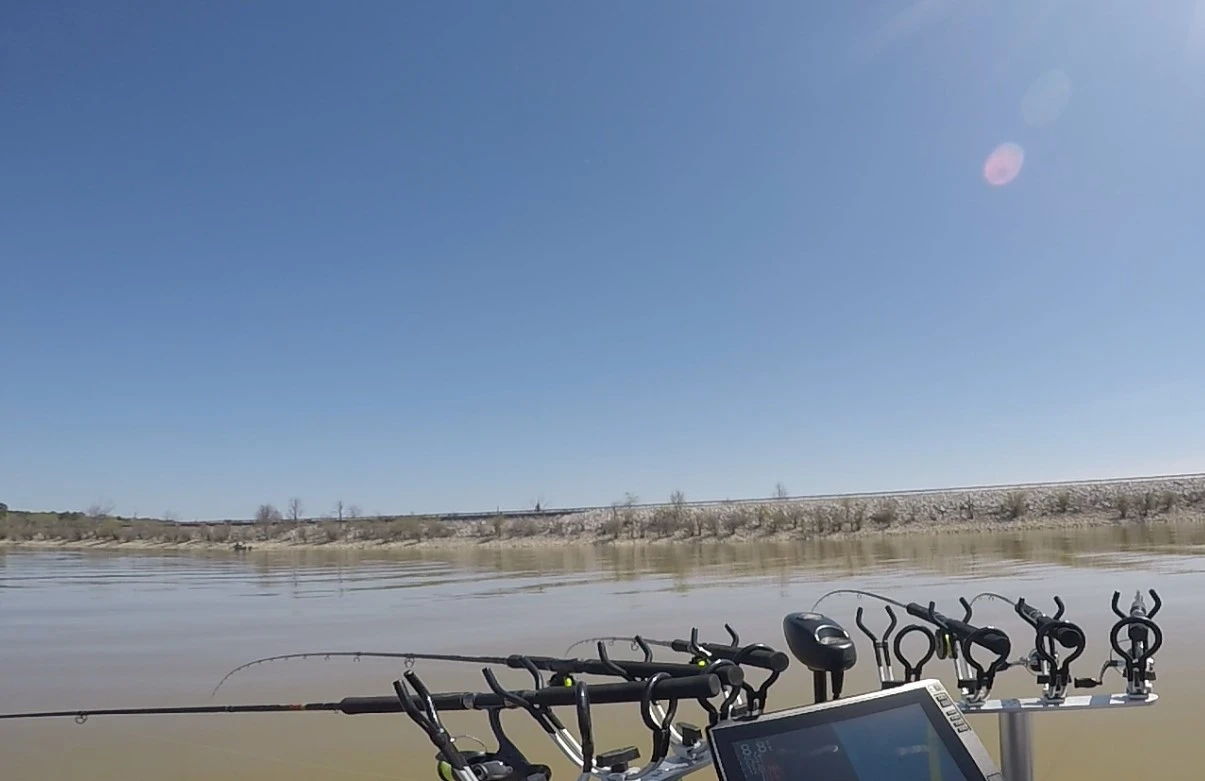Basic Equipment for Spider Rigging

* This page contains affiliate links. The Great Lakes Fisherman may earn a commission on items purchased through these links. For more on this, please click here.
Crappie fishing one of my favorite species of fish to chase. This is because they are found in most fresh water lakes and streams, they’re a prolific breeder, meaning that they are found in large numbers, they are one of the best tasting fish, and they are a perfect target for young anglers. And probably the most productive way to catch these fish is using a technique known as “spider rigging”. But what is the basic equipment for spider rigging and how can you get started?
Spider rigging is a slow trolling technique whereby the trolling rods are placed horizontally off the boat with the baits trolled directly under the rod tip. This is done by using a heavy weight to keep the line from swinging back too far. In addition, long specialized rods are used to get the baits far enough from the boat such that the crappie aren’t spooked. These rods can be up to 16′ long or even longer!
In this article, I’ll go over the setup and the basic equipment necessary to get started in spider rigging.
The Boat
By definition, spider rigging is done from a boat. Many different boats can be used for this. While boats with some sort of front deck, such as a bass boat, are the most popular, many other boats can be used. In fact, the very first time I was introduced to spider rigging was on a pontoon boat. I have also seen small 12′ jon boats set up for spider rigging.
The Rods
The rods used for spider rigging start at 12′ and get as long as 20′. The length of the rod you’ll need is dependent of a few factors including the size of your boat, the depth of water you intend to target, and the clarity of the water. For most anglers, 14′ is the standard rod length, but more and more anglers are opting for 16′ rods, especially when trolling in very shallow or clear waters where the boat may spook the fish more easily. A great rod to get started is the Buck’s Graphite Jig pole by B’N’M in 14′ length.
The Reels
The reels for this don’t need to be anything special. Because of the rod length, the fish will often just be lifted and swung into the boat with no reeling necessary. I would go cheap here. These reels are a great choice.
Rod Holders
This is the third and final requirement for getting into spider rigging. You’ll need a rod holder for each rod. These rod holders are mounted in a horizontal oriention so that when placed in the holder, they are level with the water. These holders should be mounted on the boat where you plan to sit. The most popular location for this is at the front of the boat because as the boat moves in a forward direction, the baits trolled here are the least likely to spook the fish.
While rod holders can be mounted individually, the most popular way to do this is to mount a tree with 3-4 rod holders mounter to it. This allows 3-4 rods to be accessed from the same sitting position Usually, 2 of these trees will be mounted at the front of the boat, with one left of and one right of the bow. In this way 6-8 rods can be accessed from one or two seats mounted on the front deck. There are several styles of these, but a popular one is this one made by Millenium Marine.
Dual Seat Mounts
Many crappie fisherman like to setup the front of their boats for 2 anglers to fish side by side. This setup is great for taking a kid or a buddy fishing and is one of my favorite ways to fish, period.
In order to mount a second seat to the deck of your boat, you’ll need a specially made mounting system like this one from Millenium Marine. You’ll want to check to be sure that your boat’s seats fit this mount. If you’d prefer to buy the seats with the mount, a pair of these are popular and will go with the mount above.
The Line
High vis line is highly recommended for this application. When running 3 or more rods, it can be difficult to see bite on any given rod. The high vis line helps tremendously here as you can see any movement more easily, especially i f the fish pulls sideways, which often happens in shallower water.
I use 6lb. test for the main line and use 4 lb. flourocarbon for the rig material.
The Rig
The rig starts with an egg weight slid onto the main line. This weight will ideally be as light as necessary to keep your lines from trailing back. You want the lines vertical. I typically use a 1 oz. egg weight but you can go heavier or lighter based on the baits used and the speed trolled.
Next, I tie on a standard barrel swivel followed by an 18-24″ leader made of the 4 lb flourocarbon line I mentioned earlier. Finally, a 1/16 oz. jig with your favorite plastic is tied on to the end of the leader. My all around very favorite bait to use in this application is the original Charlier Brewer Slider in various colors on a 1/16 oz. chartreuse jig head.
